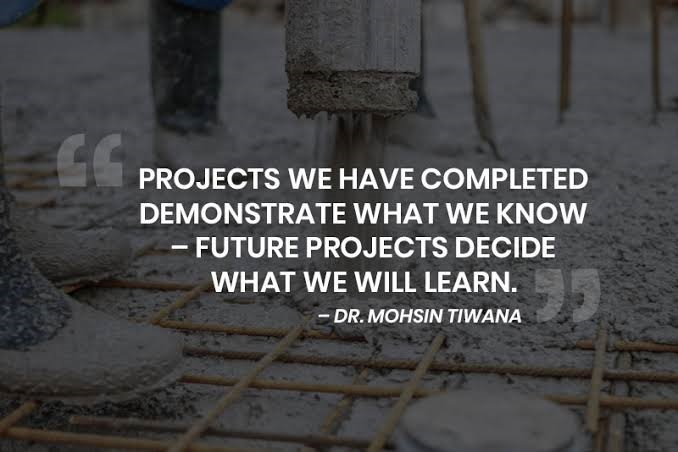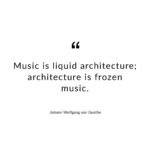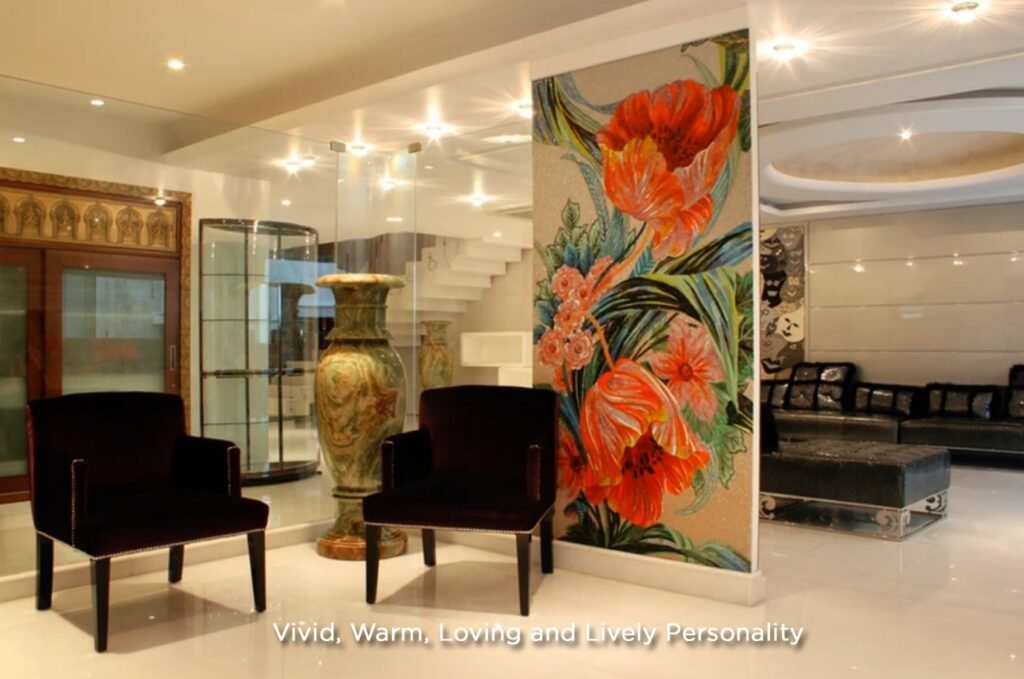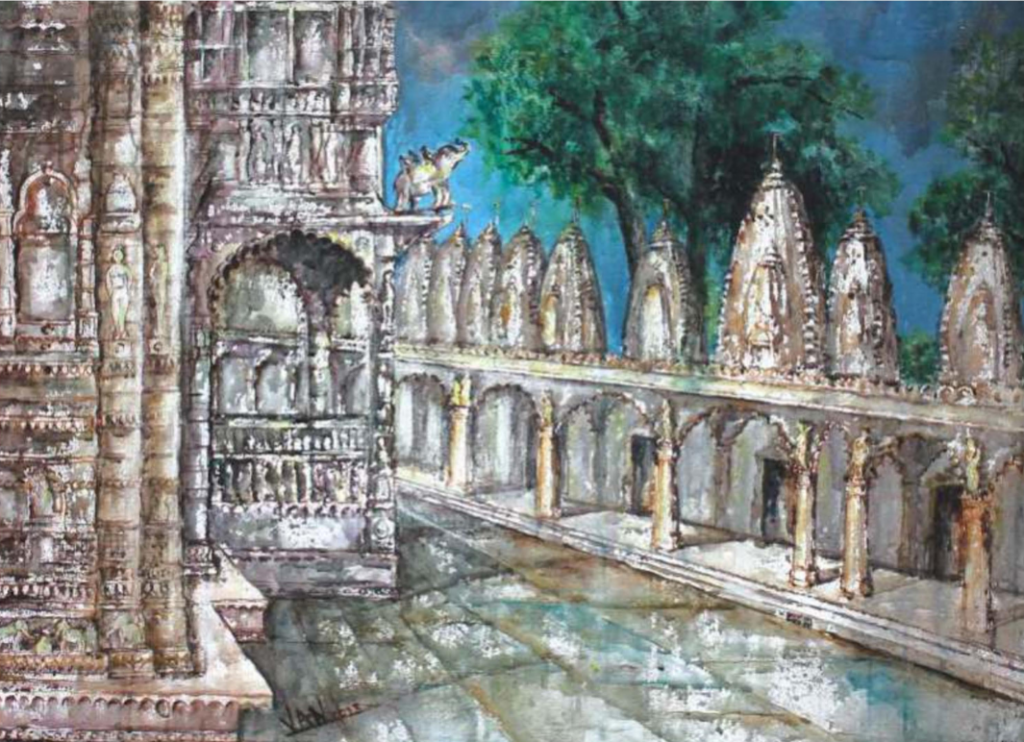~ Dr. Mohsin Tiwana This statement beautifully encapsulates the essence of continuous learning, growth, and innovation, particularly within fields like architecture, engineering, project management, and indeed, any dynamic professional discipline. It highlights the distinction between competence and evolution, past achievements and future aspirations. This observation captures a timeless truth about creative disciplines—especially architecture, where each …
~ Dr. Mohsin Tiwana

This statement beautifully encapsulates the essence of continuous learning, growth, and innovation, particularly within fields like architecture, engineering, project management, and indeed, any dynamic professional discipline. It highlights the distinction between competence and evolution, past achievements and future aspirations. This observation captures a timeless truth about creative disciplines—especially architecture, where each project becomes both a reflection of expertise and a launchpad for discovery. It speaks to the dynamic nature of our profession, where knowledge is proven in retrospect, but growth is pursued through future challenges.
“PROJECTS WE HAVE COMPLETED DEMONSTRATE WHAT WE KNOW”
This first half of the quote speaks to the validation and consolidation of existing knowledge and skills. Completed projects serve as tangible evidence of an individual’s or an organization’s capabilities, expertise, and proven track record. They are a testament to:
- Proof of Competence and Expertise: Every completed project is a real-world application of accumulated knowledge. In architecture, this means demonstrating an understanding of structural principles, building codes, material properties, aesthetic theories, and spatial planning. In engineering, it showcases proficiency in design, calculations, system integration, and problem-solving. These projects are living portfolios, showcasing what one is capable of doing.
- Validation of Methodologies and Processes: Successful completion of a project means that the methodologies, workflows, and processes employed were effective. It validates the approach to conceptualization, design development, documentation, construction management, and client communication. It confirms that the team knows how to deliver.
- Client Trust and Credibility: For clients, past projects are the primary indicators of reliability and quality. They demonstrate a history of meeting deadlines, adhering to budgets, and delivering desired outcomes. This builds trust and credibility, which are essential for securing future work. It proves that the entity can be trusted to deliver on its promises.
- Consolidation of Existing Knowledge: The act of completing a project solidifies theoretical knowledge into practical experience. It moves learning from abstract concepts to applied skills, reinforcing what has been studied and practiced. It means that the knowledge is not just stored, but integrated and functional.
- Benchmarking and Reputation: Completed projects establish a benchmark for quality and performance. They contribute to an individual’s or a firm’s reputation in the industry. A portfolio of successful projects speaks volumes about the depth and breadth of one’s existing expertise.
In essence, the completed projects are the bedrock upon which reputation is built. They are a retrospective glance at what has been mastered, a summary of current capabilities, and a demonstration of established proficiency. They answer the question: “What can you do now?”
“FUTURE PROJECTS DECIDE WHAT WE LEARN”
This is the more dynamic and forward-looking part of the quote, emphasizing innovation, adaptability, and continuous improvement. It posits that true growth doesn’t come from rehashing old solutions but from embracing new challenges. Future projects are not just opportunities to apply existing knowledge but fundamentally to expand it.
- Drivers of Innovation and Research: New projects often come with unique constraints, complex requirements, or novel ambitions. These challenges push the boundaries of current knowledge, forcing individuals and teams to research new technologies, experiment with different materials, explore unconventional design approaches, or develop bespoke solutions. This is where cutting-edge learning happens.
- Exposure to New Problems and Contexts: Every new project presents a distinct set of problems – a different site, a unique client, emerging regulatory changes, evolving social needs, or novel environmental considerations. Engaging with these new contexts necessitates learning about unfamiliar domains, adapting to diverse conditions, and developing versatile problem-solving skills. For example, a firm known for residential design might take on a hospital project, forcing them to learn about complex healthcare regulations, patient flow, and specialized equipment.
- Catalysts for Skill Development: Future projects often demand new skills that are not yet fully developed. This might involve learning new software, mastering advanced construction techniques, understanding new sustainable design principles, or honing negotiation and communication skills in more complex scenarios. The project itself becomes the curriculum for skill acquisition.
- Embracing Disruption and Change: Industries are constantly evolving with new technologies, shifting market demands, and global challenges (like climate change or rapid urbanization). Future projects often emerge from these changes, compelling practitioners to learn about and adapt to disruption. They become the vehicles through which individuals and organizations stay relevant and competitive.
- Shaping Future Capabilities: The learning derived from future projects isn’t just about solving the immediate problem; it’s about expanding the fundamental capabilities and offerings. It allows for the development of new specializations, the refinement of innovative processes, and ultimately, the ability to tackle even more complex and ambitious projects down the line. It answers the question: “What will you be able to do next?”
The Synergy: A Virtuous Cycle of Growth
The power of Dr. Tiwana’s quote lies not just in recognizing these two distinct aspects, but in highlighting their synergistic relationship. Completed projects provide the foundation, the confidence, and the credibility needed to attract future, more challenging projects. These future projects, in turn, become the engines of learning and innovation, expanding the “knowledge base” which then gets demonstrated in even newer future projects. This creates a virtuous cycle of continuous improvement:
- Past success (demonstrated knowledge) breeds confidence and opportunities for new challenges.
- New challenges (future projects) necessitate learning and innovation.
- New learning expands capabilities, leading to more complex and impactful “completed projects.”
In disciplines like architecture, this continuous learning is absolutely vital. The profession is not static; it evolves with new materials, construction methods, computational tools, environmental imperatives, and societal expectations. An architect who relies solely on past knowledge will quickly become obsolete. An architect who actively seeks out challenging new projects, viewing them as opportunities for profound learning, will consistently push the boundaries of their craft and contribute meaningfully to the built environment.
Ultimately, Dr. Tiwana’s quote is a powerful reminder to avoid complacency. While celebrating past achievements is important, true professional growth lies in embracing the unknown, being open to new challenges, and understanding that every future endeavour is a lesson waiting to be learned, shaping not just the project itself, but the practitioner’s evolving expertise and future trajectory. It’s an ode to the lifelong journey of learning and adaptation that defines successful careers in dynamic fields.





